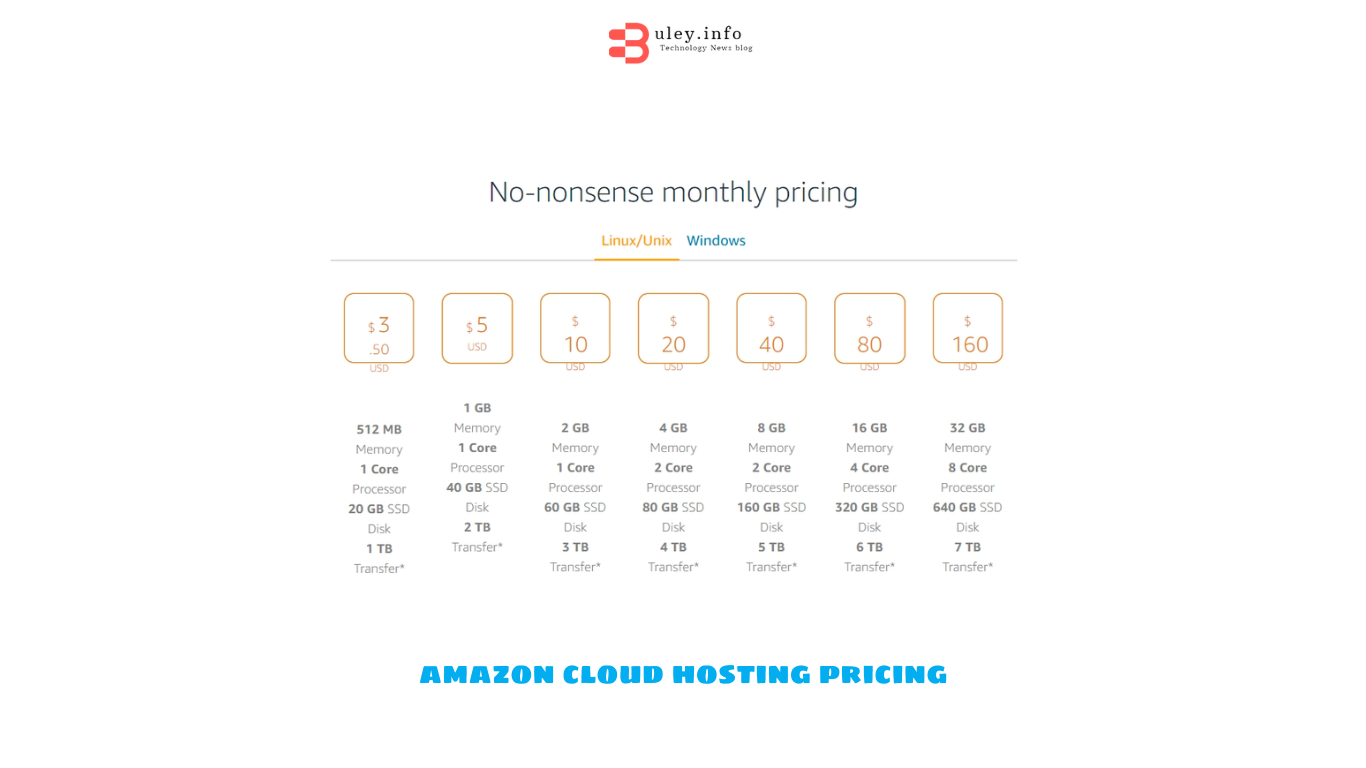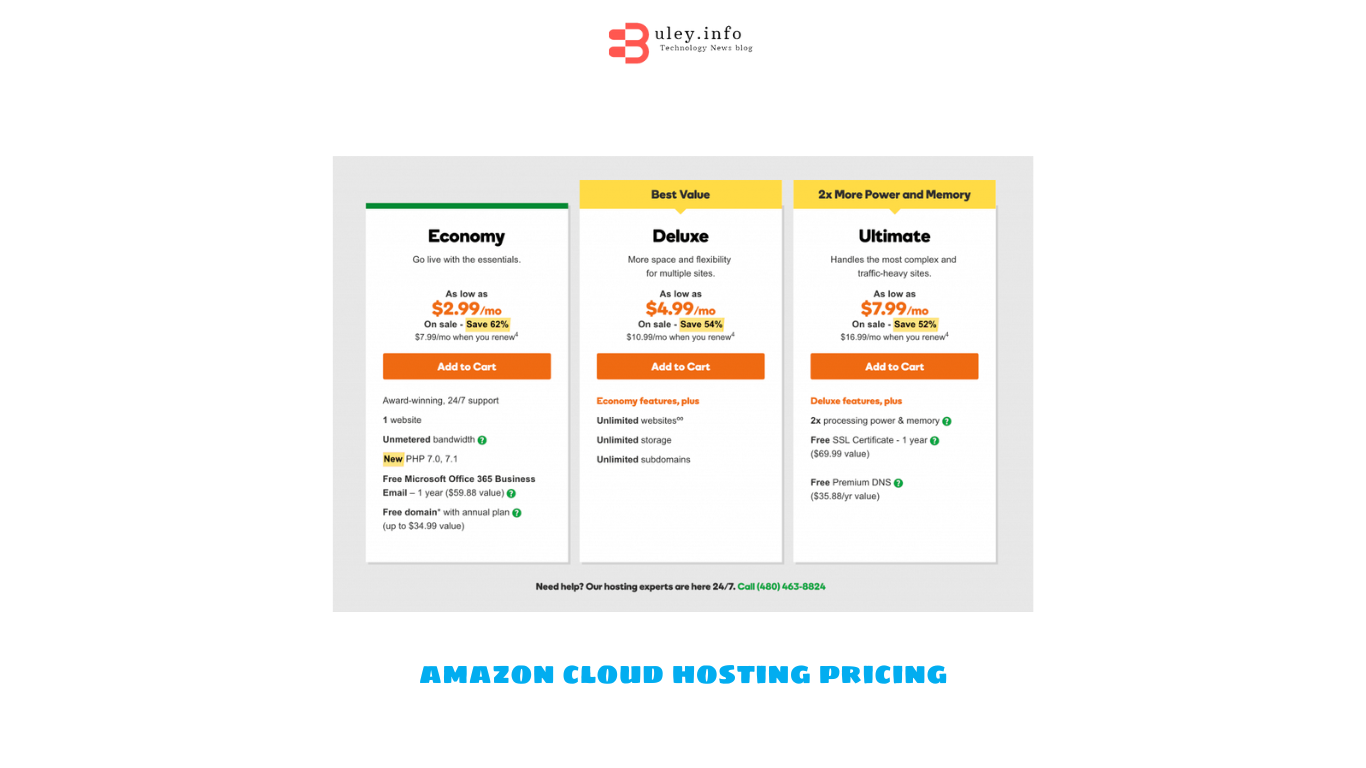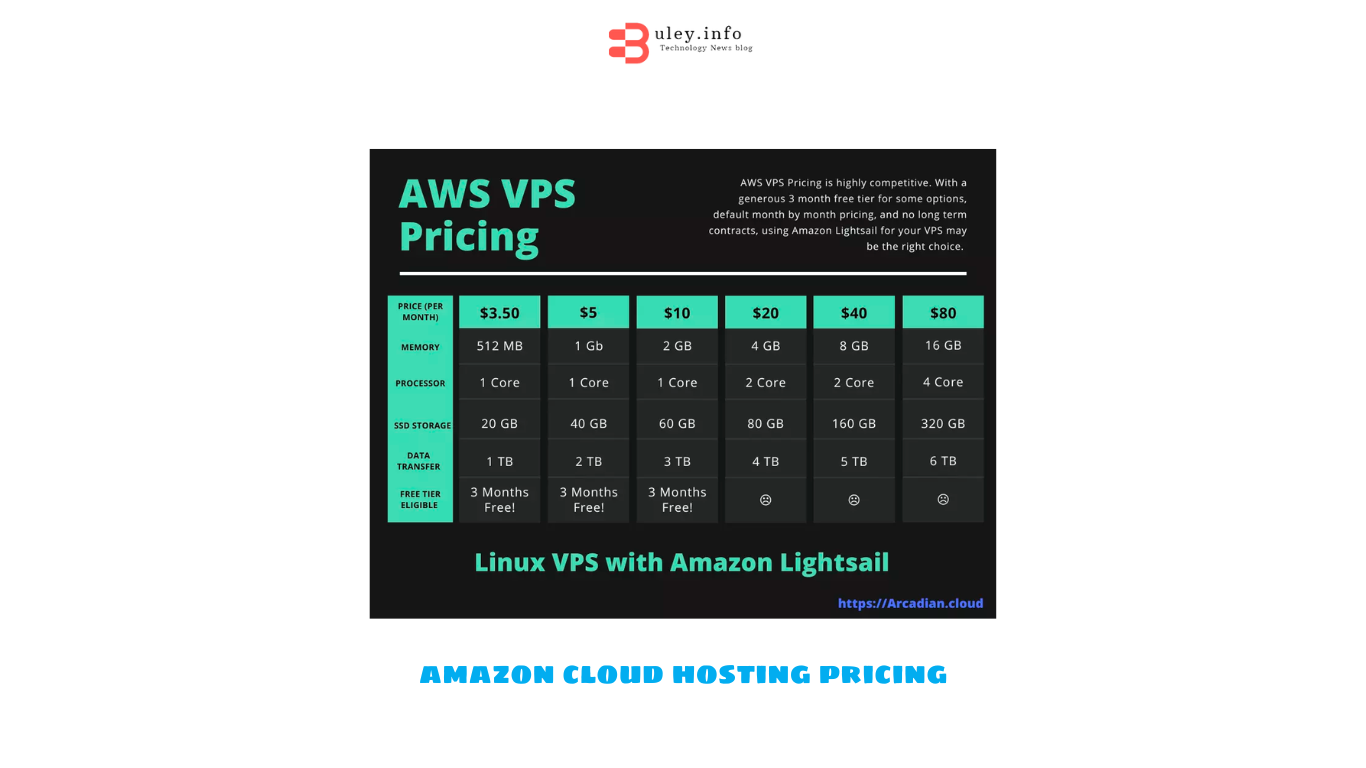In the fast-paced digital landscape, businesses and organizations are increasingly turning to cloud hosting solutions to meet their computing and storage needs. Among the leading providers in the industry, Amazon Web Services (AWS) offers a robust and scalable cloud hosting platform known as Amazon Web Services (AWS). This article by Uley.info serves as a comprehensive guide to Amazon cloud hosting pricing, providing insights into the costs involved and the various plans available. Whether you are a small startup or a large enterprise, understanding Amazon cloud hosting pricing is essential for making informed decisions about your hosting needs.
Contents
- 1 Amazon Cloud Hosting Pricing: A Comprehensive Guide to Costs and Plans
- 1.1 I. Understanding the Basics of Amazon Cloud Hosting:
- 1.2 II. Pricing Models and Factors:
- 1.3 III. Amazon EC2 Pricing:
- 1.4 IV. Amazon S3 Pricing:
- 1.5 V. Additional Services and Pricing Considerations:
- 1.6 VI. Cost Optimization Strategies:
- 1.7 VII. Planning Your Amazon Cloud Hosting Budget:
- 1.8 VIII. Comparing Amazon Cloud Hosting Pricing with Competitors:
- 1.9 IX. Case Studies and Success Stories:
- 2 Conclusion:
Amazon Cloud Hosting Pricing: A Comprehensive Guide to Costs and Plans
I. Understanding the Basics of Amazon Cloud Hosting:
- What is Amazon Cloud Hosting?: Amazon Cloud Hosting, commonly referred to as Amazon Web Services (AWS), is a amazon cloud hosting pricing computing platform that provides a range of services, including virtual servers, storage, databases, and more. It offers flexible and scalable solutions to meet the demands of businesses of all sizes.
- Benefits of Amazon Cloud Hosting: Amazon cloud hosting offers numerous advantages, such as high reliability, scalability, security, and cost-effectiveness. With AWS, businesses can easily scale their resources up or down based on their requirements, pay only for what they use, and leverage a global infrastructure for better performance.
II. Pricing Models and Factors:
- Pay-as-you-go Pricing: One of the key features of Amazon cloud hosting is its pay-as-you-go pricing model. Instead of committing to long-term contracts, users are billed based on their actual resource usage. This flexible approach allows businesses to optimize their costs and align them with their specific needs.
- Pricing Factors: Several factors contribute to Amazon cloud hosting pricing, including the type and size of the resources used, data transfer, storage, and additional services utilized. Understanding these factors is crucial for estimating costs accurately.
III. Amazon EC2 Pricing:
- Amazon Elastic Compute Cloud (EC2): Amazon EC2 is the core service within AWS that provides virtual servers, known as instances, for running applications and workloads. EC2 instances form the backbone of many cloud hosting setups.
- EC2 Instance Types: amazon cloud hosting pricing EC2 offers various instance types, each optimized for different workloads and performance requirements. The pricing of EC2 instances varies based on factors such as instance family, size, and region.
- On-Demand Instances: On-Demand instances are the most flexible option, allowing users to pay for compute capacity by the hour without any long-term commitments. This pricing model is ideal for unpredictable workloads or short-term projects.
- Reserved Instances: Reserved Instances provide significant cost savings for users who can commit to a specific instance type and term, ranging from one to three years. Reserved Instances are well-suited for workloads that have predictable usage patterns.
- Spot Instances: Spot Instances offer the potential for substantial cost savings, allowing users to bid on unused EC2 capacity. However, the availability of Spot Instances is subject to market demand and can be terminated with a two-minute notification.
IV. Amazon S3 Pricing:
- Amazon Simple Storage Service (S3): amazon cloud hosting pricing S3 is a highly scalable and durable storage service offered by AWS. It is designed to store and retrieve large amounts of data, making it an essential component of many cloud hosting architectures.
- Storage Classes: Amazon S3 offers different storage classes, each with varying levels of durability, availability, and cost. The pricing of S3 depends on the storage class chosen, the amount of data stored, and any additional features utilized, such as data transfer or retrieval requests.
V. Additional Services and Pricing Considerations:
- Data Transfer Costs: Amazon cloud hosting pricing includes data transfer costs for both inbound and outbound data. It is essential to understand the pricing structure for data transfer, especially if your application involves frequent data transfers or serves a global user base.
- Additional Services: AWS offers a wide range of additional services that complement cloud hosting, such as databases, content delivery networks (CDNs), load balancers, and more. Each service has its pricing structure, and understanding these costs is crucial when designing your hosting architecture.
VI. Cost Optimization Strategies:
- Right-Sizing Resources: Analyzing your workload requirements and choosing the appropriate instance types and sizes can help optimize costs. Avoid overprovisioning resources that are not fully utilized.
- Utilizing Cost Calculators and Tools: AWS provides various cost calculators and tools that can help estimate and optimize your cloud hosting costs. These tools allow you to analyze and compare different pricing scenarios based on your specific requirements.
- Implementing Resource Optimization Techniques: Employing techniques such as auto-scaling, load balancing, and serverless computing can help optimize resource utilization, resulting in potential cost savings.
VII. Planning Your Amazon Cloud Hosting Budget:
- Budgeting Considerations: When planning your Amazon cloud hosting budget, consider factors such as the scale of your application, expected growth, usage patterns, and any potential cost optimizations. It is crucial to regularly reviewand adjust your budget as your needs evolve.
- Monitoring and Cost Management: Continuous monitoring of your cloud hosting resources and costs is essential to identify any unexpected spikes or inefficiencies. Utilize AWS Cost Explorer and other monitoring tools to gain insights into your spending patterns and make informed decisions.
VIII. Comparing Amazon Cloud Hosting Pricing with Competitors:
- Competitive Landscape: While Amazon cloud hosting is widely regarded as a leading provider, it is essential to compare its pricing with other major cloud hosting providers like Microsoft Azure and Google Cloud Platform. This comparison can help you evaluate the cost-effectiveness of different platforms and make an informed decision.
- Considerations for Comparison: When comparing pricing, consider factors such as the specific services and features offered, geographical availability, support options, and any unique requirements of your application.
IX. Case Studies and Success Stories:
- Real-Life Examples: Highlighting case studies and success stories of businesses that have successfully leveraged Amazon cloud hosting can provide insights into the potential benefits and cost savings. These examples can inspire and guide your own cloud hosting journey.
- Industries and Use Cases: Explore how different industries, such as e-commerce, media, healthcare, and startups, have utilized Amazon cloud hosting to achieve scalable and cost-efficient solutions.
Conclusion:
Amazon cloud hosting pricing plays a vital role in determining the cost-effectiveness and scalability of your cloud infrastructure. Understanding the pricing models, factors, and various plans offered by Amazon Web Services (AWS) empowers businesses to make informed decisions and optimize their cloud hosting costs. By leveraging the flexibility and scalability of Amazon cloud hosting, organizations can align their hosting expenses with their specific needs, drive innovation, and achieve a competitive edge in the digital landscape.





